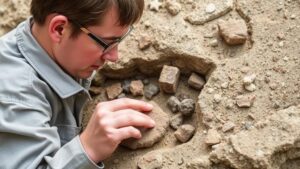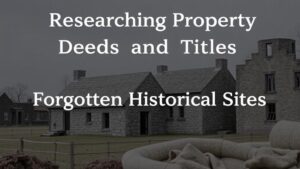Historic Map Overlays: Using Online Resources to Identify Buried Relics
Historic Map Overlays: Using Online Resources to Identify Buried Relics
The intersection of technology and historical research has created an avenue for uncovering the past through the utilization of historic map overlays. These tools allow researchers, archaeologists, and history enthusiasts to pinpoint the locations of buried relics by comparing modern maps with historical representations. This article explores the methodologies employed in historic map overlays, highlights key online resources, and illustrates how these practices have led to significant archaeological discoveries.
Understanding Historic Map Overlays
Historic map overlays involve the superimposition of older maps onto current geospatial representations. This technique enables users to visualize changes in geography, land use, and urban development over time. The comparison of these maps is crucial for identifying potential sites of interest where relics may reside, offering insights into past human activity.
- Georeferencing: This is the process of aligning historical maps with their modern geographical coordinates. Tools like GIS (Geographic Information Systems) software provide the framework for accurate positioning.
- Scale Comparison: Different maps may vary in scale; thus, it is essential to maintain consistent measurements when overlaying to ensure accuracy.
- Layering Techniques: Many modern mapping applications allow for the layering of multiple maps, including satellite imagery, to provide a more dynamic view of the geographic changes.
Key Online Resources for Historic Maps
Several online platforms have emerged as valuable resources for accessing historic maps. e platforms provide extensive archives that researchers can utilize to conduct their overlays.
- David Rumsey Map Collection: One of the largest private map collections in the world, this repository includes over 150,000 maps, many of which are digitized and georeferenced, making them readily accessible for research purposes.
- National Archives: Historic Map Collection: The U.S. National Archives offers a rich repository of maps that pertain to various American histories, like topographic surveys, military maps, and land grants.
- Library of Congress: Maps: With thousands of digitized maps available, the Library of Congress serves as a critical resource for scholars studying the historical geography of the United States and beyond.
Real-World Applications and Case Studies
The practical applications of historic map overlays in archaeology are vast. Several case studies illustrate how the combination of historical map analysis and modern geospatial techniques has led to significant findings.
- Fort Vancouver National Historic Site: In the early 2000s, researchers utilized historic maps from the Hudsons Bay Company to identify the original boundaries of the Fort Vancouver stockade. This identification led to targeted excavation efforts, revealing artifacts from the 19th century.
- Chicagos Great Fire: The Chicago Historical Society implemented overlay techniques with maps from 1871 and later to study the urban redevelopment following the Great Fire. This analysis provided insights into architectural changes and urban planning approaches.
Challenges and Considerations
While historic map overlays provide significant advantages, there are also challenges and limitations that researchers must navigate. Key concerns include:
- Accuracy of Historical Maps: Not all historic maps are precise or reliably georeferenced, which can result in misinterpretation. Verification with additional sources is necessary.
- Data Compatibility: Different formats and metadata associated with historic maps can complicate their integration into modern GIS applications.
- Legal Constraints: Intellectual property laws may limit the reuse of some maps, requiring users to seek permissions before utilizing certain resources.
Conclusion and Actionable Takeaways
The use of historic map overlays is an innovative approach to archaeology and historical research, empowering researchers to uncover buried relics and gain deeper insights into historical contexts. By leveraging online tools and resources wisely, individuals can facilitate their findings and contribute valuable knowledge to their respective fields.
To harness the power of historic map overlays effectively, consider the following actionable takeaways:
- Start with reputable online resources to access quality historic maps.
- Invest time in learning GIS software to improve your georeferencing and layering skills.
- Engage with local historical societies or archaeological groups to share findings and collaborate on projects.
As our digital capabilities increase, the potential for historic map overlays in revealing the past continues to expand, bridging the gap between history and the present.



